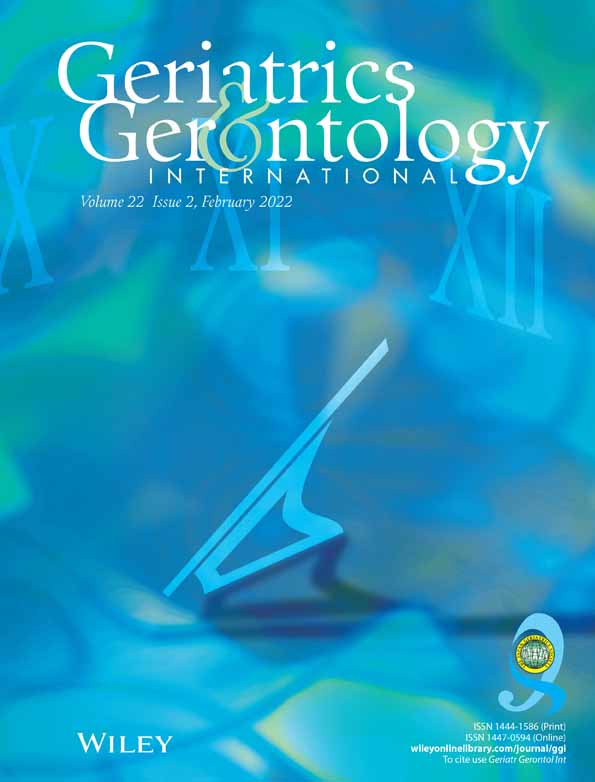Social frailty is independently associated with geriatric depression among older adults living in northern Japan: A cross-sectional study of ORANGE registry
Abstract
Aim
To clarify prevalence of social frailty among older adults living in a rural Japanese community, and factors associated with social frailty status.
Methods
In total, 322 adults aged ≥65 years living in a Japanese rural community took part in the study from 2018 to 2020. Social frailty was defined as deficiencies of: (i) living alone; (ii) talking with someone every day; (iii) feeling helpful to friends or family; (iv) going out less frequently compared with last year; and (v) visiting friends sometimes. Social frail status was categorized as robust (0), social prefrail (1), and social frail (≥2), according to the summated score of Makizako's criteria. Multiple logistic regression analysis was applied to clarify factors associated with social frailty status.
Results
Final samples were classified into 68 persons with social frailty, 98 persons with social prefrailty and 147 persons as robust. We observed the prevalence of social frailty (21.7%) and social prefrailty (31.3%) and the GDS-15 had significantly high scores in the social frail groups. Social frailty was significantly associated with the GDS-15 score (odds ratio, 1.33; 95% CI, 1.19–1.49) and TMT-A (odds ratio, 1.04; 95% CI, 1.01–1.08) and GDS-15 (odds ratio, 1.13; 95% CI, 1.03–1.26) were extracted as independent variables of social prefrail status, with adjustment for demographics, polypharmacy and lifestyle-related diseases.
Conclusions
Our results suggest that social frailty tends to be increasing gradually in a Japanese rural area, and social prefrailty might be potentially associated with attentional function, as well as the GDS-15 score. Geriatr Gerontol Int 2022; 22: 145–151.
Conflict of interest
The authors declare no conflict of interest.
Open Research
Data availability statement
The data that support the findings of this study are available on request from the corresponding author. The data are not publicly available due to privacy or ethical restrictions.




